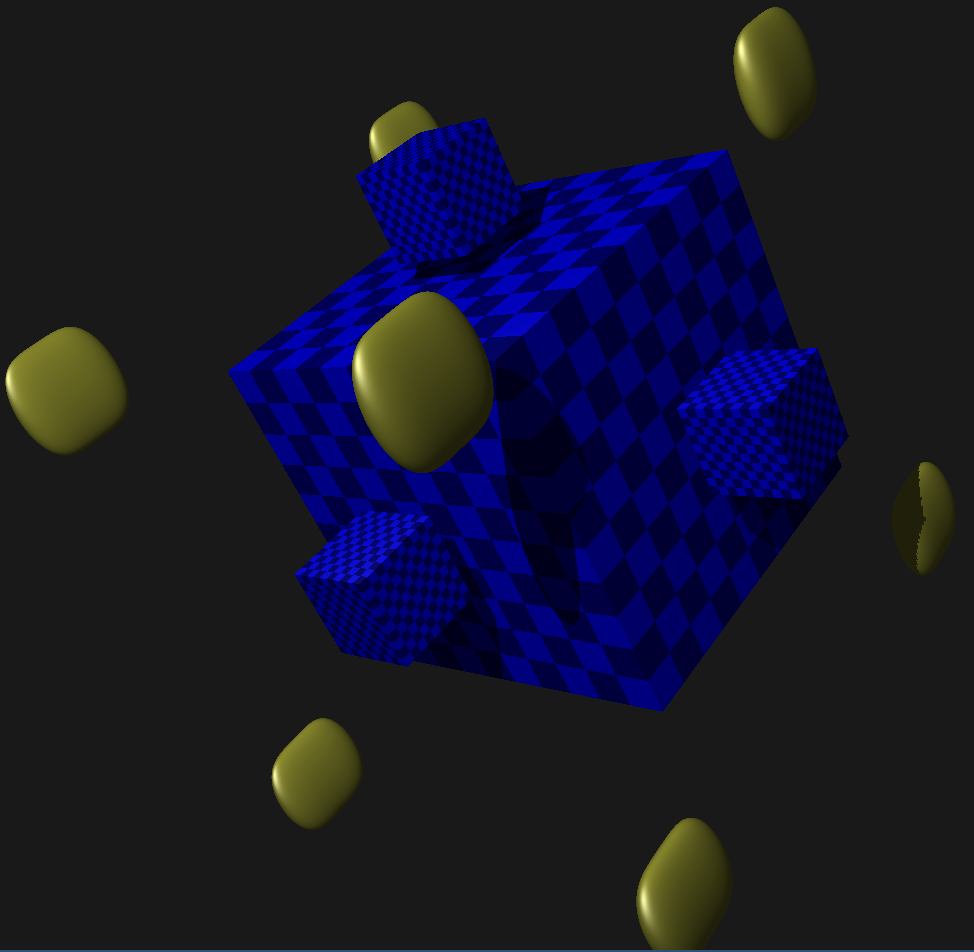This project aims at providing a portable way to write OpenGL (more precisely OpenGL ES) application in OCaml. It comes in three parts:
- Low level bindings allowing direct calls to OpenGL ES functions. These bindings try to remain reasonably type-safe using polymorphic variants to encode enumeration types. The low level bindings also provide some sanity checks for the size of bigarrays which allow to capture quite a lot of errors with clear messages.
- High level bindings providing auxiliary functions like matrix inversion
to ease the development. For instance, to use shaders with the high
level bindings, you may use
compile_shaderwith the sources code, to get a value of typeunit program. Then, you can set the variables of the shaders (uniform or attributes), either as constant or function and get an OCaml function to finally run the shaders. - A wrapper to open a window, start the main loop and interact. Currently only EGL under X11 is supported, but we would like to support different platforms in the future (Windows, Android, iOS, Wayland, ...) without changing the interface.
- Alexandre Miquel (initial low level bindings for GLES 2)
- Christophe Raffalli (partial port to GLES 3.0, high-level bindings and examples)
- Rodolphe Lepigre (maze example and port to the dune build system)
To install from source, clone the repository and run make && make install.
Alternatively, you can pin the repository using the following command:
opam pin add gles3.dev https://github.com/craff/gles3.gitThe OCaml documentation can be extracted to a webpage using make doc. The
generate page is the placed at _build/default/_doc/_html/index.html).
The repository also contains multiple examples:
examples/testa/testa.ml: a rotating cube.examples/testb/testb.ml: a rotating cube with a texture.examples/testc/testc.ml: 7 rotating cubes with simple shadow mapping.examples/testd/testd.ml: 7 rotating cubes and 8 implicit surfaces with simple shadow mapping.examples/spheres/spheres.ml: mainy boucing spheres, usingancientto run multicore (experimental).examples/maze/maze.ml: a maze generator with a simple exploration camera.examples/fluid_cube/fluid_cube.mlexamples/curves/curves.ml
To run the examples: to run an example, move to its directory and run the
command dune exec -- <name>, where name is testa for the first example,
and similarly for the others.
Contributions are very welcome!
Things to do:
- Test a lot.
- Write more documentation.
- Complete the low-level bindings (see
PRIMITIVES). - Imprive the high-level bindings guided by more examples.
- Provide support for more platforms.
- Find a way to support multiple version of GLES (at least 2.0, 3.0, 3.1, 3,2) with only one OCaml library, and possibly in a transparent way when using the high-level bindings (i.e., the high level bindings should test the version and make the best choice).
- Collect regexp for error message in GLSL for most GLES vendors to give good error messages in all cases (only nouveau/mesa is currently supported). It seems that OpenGL ES does not standardize even error message positions.
